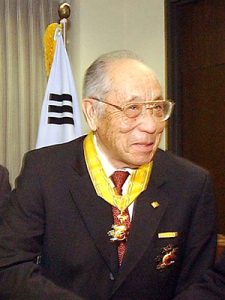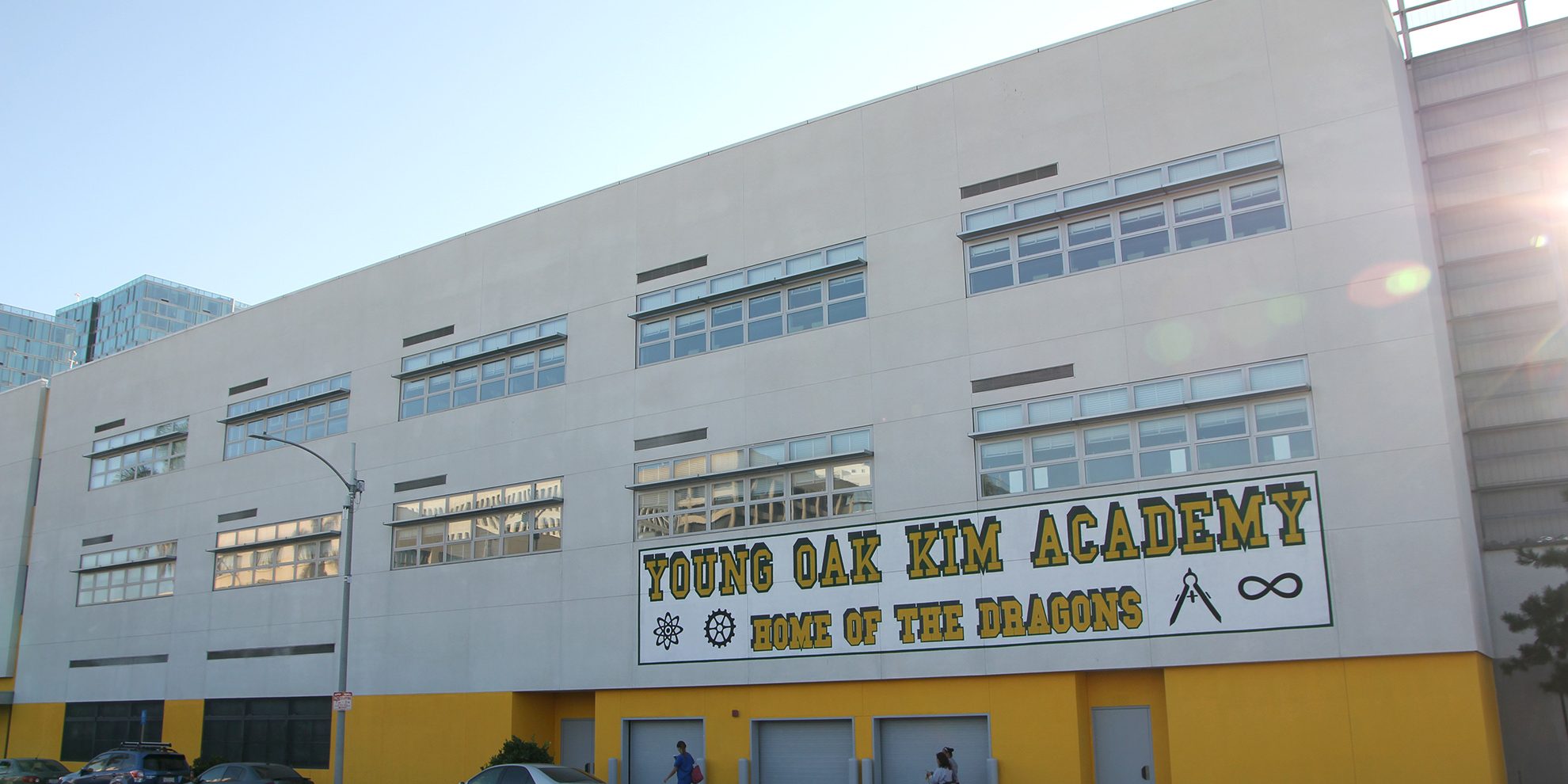Did you know there is a public school in the United States named after a Korean? In September of 2009, a new public school opened in Los Angeles, California. The Los Angeles United School District Board of Education unanimously approved the name “Young Oak Kim Academy.” This academy became the first public school to have a Korean name in the country.
Who is this man Young Oak? Why is he so respected that even a school is named after him? On May 30, 2011, MSN selected 16 famous U.S. war heroes in celebration of Memorial Day. The heroes were selected from all periods in U.S. history, from the Revolutionary War, World War II, up to the most current wars.
1.George Washington, 2. Nathanael Greene, 3. Robert E. Lee, 4. Philip Kearny 5.Ulysses S. Grant, 6. George A. Custer, 7. P.G.T. Beauregard, 8. Dwight D. Eisenhower
9.Douglas MacArthur, 10. Audie Murphy, 11. George S. Patton, 12. William Dean 13.Young-Oak Kim, 14. John McCain, 15. John Kerry, 16. Norman Schwarzkopf
Let’s take a closer look at some of them. The list includes George Washington, the first U.S. president and the commander-in-chief of the Continental Army; Dwight D. Eisenhower, the 34th U.S. president and the commander of the Allied forces during World War II; Douglas MacArthur, the Supreme Commander for the Allied Powers during World War II. They are the most respected former presidents and war heroes.
Among them is the only Asian name, Young-Oak Kim. MSN introduced him in the following:
“Korean-American Kim was born in Los Angeles in 1919. He retired from the army after fighting in World War II but re-enlisted in order to fight in the Korean War. Kim pretended he didn’t know how to speak Korean so he could join the infantry instead of becoming an interpreter. After proving himself time and time again, Kim was promoted and became the first Asian-American to command a combat battalion in the U.S. military.”
American War Hero Young-Oak Kim!
 Young-Oak Kim was awarded the Distinguished Service Cross, Silver Stars, Bronze Stars, and many other medals for his service in WWII and the Korean War. The Distinguished Service Cross is the second highest military award after the Medal of Honor. He was also awarded high-ranking medals from other countries: A Bronze Medal of Military Valor from Italy in 1946; Légion d’honneur(National Order of the Legion of Honor) from France in 2003; and the Taegeug Order of Military Merit from Korea in 2005. He received a total of 19 medals from four countries, including the United States, Italy, France, and Korea.
Young-Oak Kim was awarded the Distinguished Service Cross, Silver Stars, Bronze Stars, and many other medals for his service in WWII and the Korean War. The Distinguished Service Cross is the second highest military award after the Medal of Honor. He was also awarded high-ranking medals from other countries: A Bronze Medal of Military Valor from Italy in 1946; Légion d’honneur(National Order of the Legion of Honor) from France in 2003; and the Taegeug Order of Military Merit from Korea in 2005. He received a total of 19 medals from four countries, including the United States, Italy, France, and Korea.
What did Young-Oak Kim do?
The website of the 100th Infantry Battalion Veterans Education Center provides information about their veterans. During WWII, the 100th Infantry Battalion was made up mostly of Japanese-Americans. What is interesting is that Korean-American Kim led Japanese-American soldiers while Korea was under Japanese rule. When he was assigned to the 100th Battalion in February of 1943, its commander offered him an immediate transfer, noting bad blood between Koreans and Japanese. Kim responded, “You’re wrong. They’re Americans. I’m American, and we’re going to fight for America.”
After Japan’s attack on Pearl Harbor in Hawaii in 1941, Americans were in shock and anti-Japanese sentiment ran high in the United States. The United States declared war on Japan and President Franklin Roosevelt signed Executive Order 9066 on February 19, 1942 that authorized the imprisonment of Japanese Americans in remote concentration camps for the sake of national security. Over 110,000 Japanese Americans were forced to relocate to the camps. Then, many Japanese Americans joined the army to prove their loyalty to the United States and to protect their safety and property. They were sent to the 100th Infantry Battalion.
The 100th Battalion and the 442nd Regimental Combat Team consisted of these Japanese-American soldiers. Kim came to this unit as a Second Lieutenant. It was not going to be easy for a Korean-American officer to command Japanese-American men. There was a concern about whether Japanese-American soldiers would accept the leadership of a Korean-American man when Korea was under Japanese rule.
However, Kim gained respect from his fellow soldiers of Japanese ancestry. During an intense battle between the Allied Forces and the Germans in Italy, he and one of his soldiers penetrated a German territory and brought back two enemy soldiers for interrogation. His brave operation played a crucial role in liberating Rome. In recognition of his extraordinary service, he was honored with the highest military medals from Italy and France. Japanese-American soldiers in his unit developed absolute trust in his leadership: “With him, we will all live.” He became a hero for his fellow soldiers. In Los Angeles, there is the Go-for-Broke Monument to commemorate Japanese American soldiers during WWII. When Japanese Americans were sent to concentration camps by Executive Order 9066, Japanese men fought for the United States to prove their loyalty. This monument symbolizes the victory that Japanese-Americans achieved against racial discrimination. The Japanese-American community’s respect for Kim is unwavering. Such respect still bonds Korean-Americans and Japanese-Americans.
In 1999, the California State Assembly unanimously passed the Assembly Joint Resolution No. 27 that urged Japan to formally apologize for its war crimes. This historic event was led by Representative Michael Honda, a third-generation Japanese American. In 2007, he introduced House Resolution 121 that urges Japan to formally acknowledge, apologize, and accept responsibility for its sexual enslavement of woman during WWII. The resolution was again unanimously passed by the U.S. House of Representatives. In April of 2015, before Japanese Prime Minister Shinzo Abe delivered a speech to the U.S. Congress, Honda produced a bipartisan letter signed by 25 representatives that urged Abe to work for reconciliation. Kim was a hidden force behind the passage of House Resolution 121.
How did Kim influence this historic achievement? Honda was a representative from California where a large Japanese population resides. When he tried to pass the house resolution, he faced a huge backlash from his constituency. Honda asked Kim for help. Given his influence on the Japanese American Veterans Association, Kim would be able to persuade Japanese-Americans. At Honda’s request, Kim met the veterans.
“My fellow veterans! Please remember what we fought for! What did we stand for? House Resolution 121 is not about a political, historical issue between Korea and Japan. It is about the human rights of innocent women who suffered during the war!”
Japanese-American veterans decided to help Honda persuade the Japanese-American community. This change empowered Honda to pass the resolution.
After WWII, Kim left the army and ran a laundry-service business. After the Korean War broke out, he returned to the army. He served as the Chief Intelligence Officer in the 31st Infantry Regiment of the 7th Infantry Division. With outstanding military tactics, he led successive victories. He contributed to pushing back the 38th parallel 60km into the North. In recognition of his distinguished service, he became the first Asian-American officer to command a combat battalion in the U.S. Army.
Kim was not only an outstanding military leader, but also a father of war orphans. He sponsored an orphanage called Gyeongcheonaeinsa and looked after 500 orphans. Because of his dedication to helping orphans, he was called “father of war orphans.” He was awarded the Moran Medal of the Order of Civil Merits in 2003 for rescuing Korean war orphans and the Taegeug Order of Military Merit in 2005 for protecting the country during the war. Throughout his entire military career, he kept his Korean name and his identity as a Korean. He was a sincere patriot both for the United States and for Korea.
In 1963, he returned to Korea as a U.S. military advisor. He contributed to creating the first Korean missile troops and to developing a Korea defense plan. He believed that strong national defense is key to preventing a war. He retired as a colonel in 1972. After his retirement, he actively participated in social work for 33 years to help the disadvantaged. He died of cancer in 2005 and now rests at the National Memorial Cemetery of the Pacific in Hawaii.
Colonel Kim is our common hero. He fought for the United States in WWII and fought for Korea in the Korean War. He was also a leader who was highly respected by Japanese-American veterans. Throughout his life, he strove to protect peace and freedom and the rights of the disadvantaged. Kim will be remembered as a hero by all of us.
